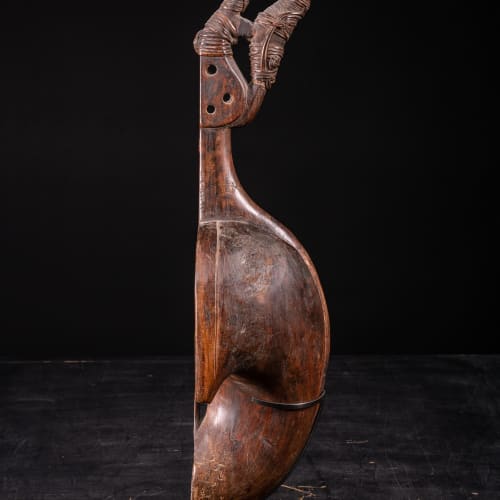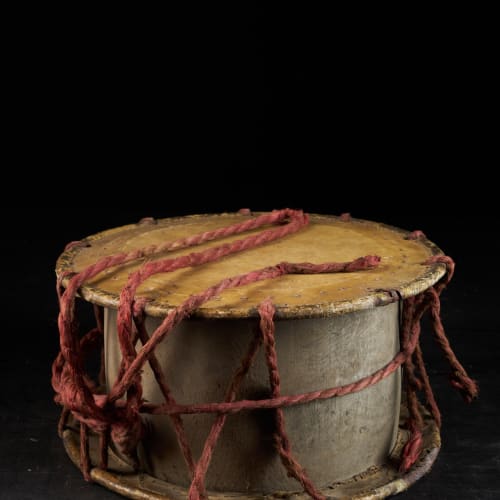The MIM began with a vision to create a musical instrument museum that would be truly global. Today, MIM has a collection of more than 8,000 instruments from more than 200 world countries. The galleries reflect the rich diversity and history of many world cultures. But music and instruments also show us what we have in common a thought powerfully expressed in our motto, music is the language of the soul.
18th C Sarinda or Short-Necked Lute, Bengal Region of Northeastern India.
The monoxyl instrument was carved from a solid block of teak or mulberry wood. It has a large open resonance box and a second chamber at the bottom. This lower part was usually covered with goat skin. A complete instrument has three gut strings. Unfortunately, they are missing here. The top of the neck is carved in the shape of a stylized peacock, impersonating Sarasvati, the Indian goddess of music.
19th C Decorated Ethnic Traditional Drum.



